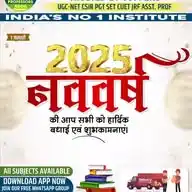
UGC NET JRF notes Professor Adda Institute
June 16, 2025 at 05:04 AM
Tyler Model of Curriculum Development *JRF topic 2025*
The Tyler Model of Curriculum Development is a widely used framework for designing and developing curricula. It was developed by Ralph Tyler in 1949 and is based on four basic questions:
1. *What are the educational purposes of the school?* (What are the goals and objectives of the curriculum?)
2. *What educational experiences can be provided to achieve these purposes?* (What learning activities and experiences will help students achieve the goals and objectives?)
3. *How can these educational experiences be organized?* (How can the learning activities and experiences be structured and sequenced to maximize learning?)
4. *How can the effectiveness of these educational experiences be evaluated?* (How can we assess whether the curriculum is achieving its intended goals and objectives?)
The Tyler Model is a linear and systematic approach to curriculum development, and it involves the following steps:
1. *Defining the educational purposes*: Identifying the goals and objectives of the curriculum, and determining what students should learn and be able to do.
2. *Selecting the learning experiences*: Choosing the learning activities and experiences that will help students achieve the goals and objectives.
3. *Organizing the learning experiences*: Structuring and sequencing the learning activities and experiences to maximize learning.
4. *Evaluating the curriculum*: Assessing the effectiveness of the curriculum in achieving its intended goals and objectives.
The Tyler Model is a widely used and influential framework for curriculum development, and it has been applied in a variety of educational settings. However, it has also been criticized for being too rigid and linear, and for not taking into account the complexities and nuances of the learning process.
*Advantages of the Tyler Model:*
1. *Clear and focused goals*: The Tyler Model helps to clarify the goals and objectives of the curriculum, and ensures that all learning activities and experiences are aligned with these goals.
2. *Systematic and organized approach*: The Tyler Model provides a systematic and organized approach to curriculum development, which can help to ensure that all aspects of the curriculum are considered and integrated.
3. *Emphasis on evaluation*: The Tyler Model emphasizes the importance of evaluating the effectiveness of the curriculum, which can help to identify areas for improvement and ensure that the curriculum is achieving its intended goals.
*Disadvantages of the Tyler Model:*
1. *Too rigid and linear*: The Tyler Model can be too rigid and linear, and may not take into account the complexities and nuances of the learning process.
2. *Overemphasis on goals and objectives*: The Tyler Model may place too much emphasis on goals and objectives, and may not consider other important aspects of the curriculum, such as the learning process and the needs and interests of students.
3. *Limited flexibility*: The Tyler Model may not allow for sufficient flexibility and adaptability, and may not be able to accommodate changing educational needs and priorities.
Overall, the Tyler Model is a widely used and influential framework for curriculum development, and it can be a useful tool for educators and curriculum developers. However, it should be used in conjunction with other approaches and frameworks, and should be adapted and modified to meet the unique needs and contexts of different educational settings.
.
.
🔥 Grab now NET/ JRF NEW 📝 notes for study
Subject & Paper 1 👍🏻
Get today click here
👇👇👇👇
wa.me/+919694993865?text=H_Send_me_notes_my_subject_is_
Join @Professors_Adda India's No -1 NET /JRF Institute Helpline No- 7690022111
😢
2